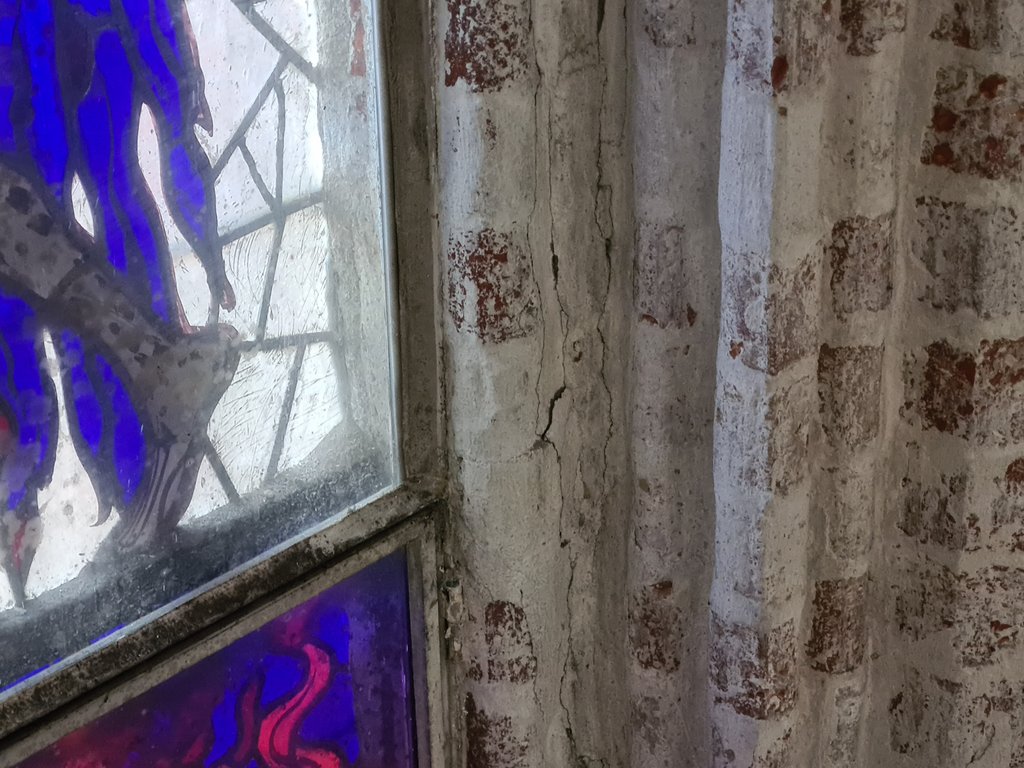Comprehensive Restoration of St. Marien Stained Glass Windows
The historical windows of St. Marien, destroyed during World War II, have undergone an impressive transformation, highlighting not only the craftsmanship of restoration but also the importance of preserving cultural values. Among the various restoration measures, the work on the artistically stained glass windows stands out, designed by renowned artists such as Alfred Mahlau and Johannes Schreiter, and installed in 1953, 1962, and 1982.
A significant issue is the internal protective glazing, which causes a climatic imbalance leading to mould growth and corrosion on the artistic windows. A revision of these protective measures is planned, considering the replacement of the internal glazing with external protective glazing to better preserve the original windows.
Particularly critical is the situation of the diamond-shaped glazing in the clerestory. Originating from an earlier reconstruction period, the unilateral puttying technique used makes them susceptible to weather exposures.
Through careful restoration measures, which includes the removal of all window panels for cleaning and puttying on both sides, the structure of these windows will be significantly improved.
The restoration work also includes mechanical rust removal and new rust protection coating of the medieval window irons, which show deep corrosion damage. Some of the irons need to be replaced due to their poor condition. The new irons will have a recommended cross-section size of 30/40mm to minimize any deformation of the window ribs and to help stabilize the construction for the long term.
Another element of the restoration efforts involves the replacement and repair of damaged and misshaped bricks and rib tiles with new and correctly corresponding shaped bricks, who have been manufactured specifically. These measures will ensure that the architectural integrity and aesthetic quality of St. Marien's windows are preserved, allowing future generations to experience the historical significance and beauty of these artworks.
Measures
- Removal of Internal Protective Glazing: The existing internal protective glazing, which has led to climatic issues and corrosion of the paint layer, will be dismantled. Instead, the installation of external protective glazing is planned to more effectively protect the artistic glazing for the future.
- Renewal of External Protective Glazing: The existing external protective glazing made of acrylic, used on the windows in the Brief Chapel and is now showing signs of yellowing and mould growth, and will be replaced with a new protective glazing.
- Puttying of Window Panels on Both Sides: All window panels will be removed, cleaned in the workshop, and puttied on both sides to ensure improved tightness against rain and wind exposure.
- Replacement of Damaged Glass: Cracked and damaged glass will be replaced with newly manufactured replacement glass that corresponds to the historical originals.
- Corrosion Treatment and Protective Coating of Window Irons: The medieval window irons will be mechanically de-rusted and receive a new, multi-layer rust protection coating to prevent further corrosion damage.
- Replacement of Window Irons if Necessary: Severely corroded window irons, which might jeopardize the structure in the future, will be replaced. The new window irons will be manufactured in an adapted cross-section size of 30/40mm to improve the stability and weather tightness of the windows.
- Repair and Replacement of Damaged Shaped Bricks and Rib Tiles: Severely damaged building elements such as miss-shaped bricks and rib tiles will be repaired or replaced, ensuring that the new parts match the original elements in shape and material.
- Stabilisation and Securing of the Window Structure: Additional measures such as pinning cracked miss-shaped bricks and supporting the window ribs with wooden beams during the removal of the window panels will be carried out to ensure structural integrity during the restoration work.


